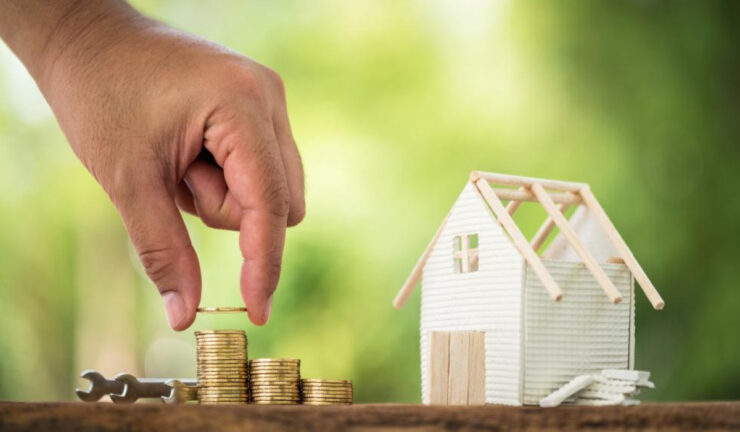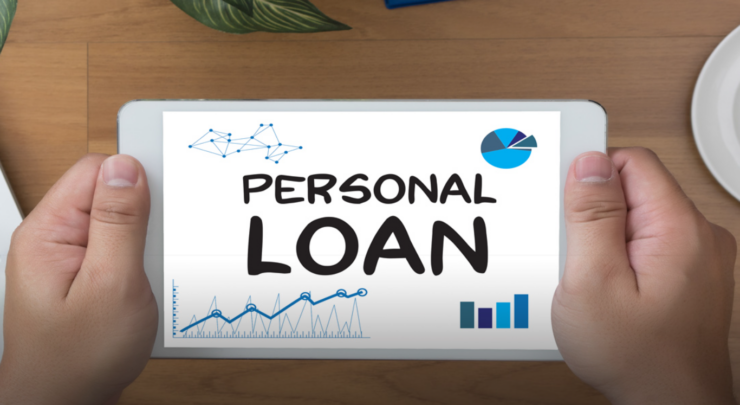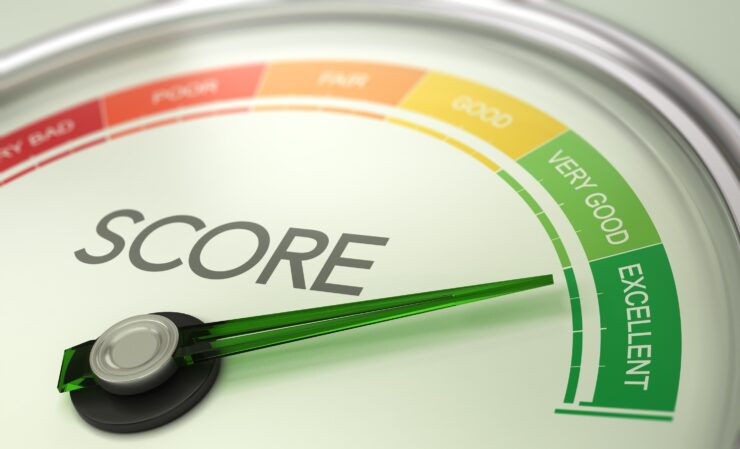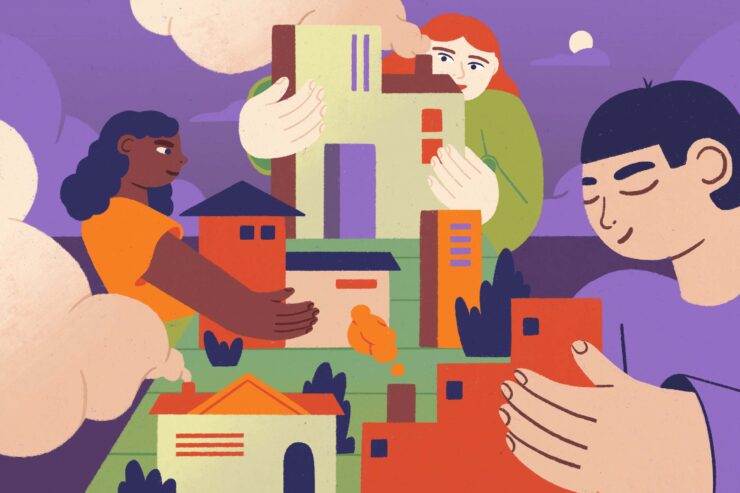Home improvement projects can breathe new life into your living space and increase your property’s value. However, if you have bad scores, securing a improvement loan may seem like an impossible task.
Fortunately, there are several financing options available to help you achieve your renovation goals, even with a less-than-stellar score.
In this article, we will explore various improvement loans with bad credit, including personal loans, government-backed loans, and alternative financing methods.
Types of Home Improvement Projects Worth Financing

When considering home improvement loans with bad credit, it’s essential to evaluate which projects are worth financing. Prioritize improvements that add value to your home, enhance your living experience, or improve energy efficiency. Here are some popular improvement projects that can be worthwhile investments:
- Kitchen Remodel: A well-designed and functional kitchen can significantly increase your home’s value and appeal to potential buyers. Upgrading countertops, cabinets, and appliances or adding a modern backsplash can make a significant impact on your kitchen’s appearance and functionality.
- Bathroom Renovation: Updating an outdated bathroom can increase your home’s value and enhance your daily routine. Consider upgrading fixtures, adding energy-efficient features, or even expanding the space if your budget allows.
- Roof Replacement: A damaged or aging roof can lead to costly repairs and potential water damage. Replacing your roof can improve your home’s curb appeal, increase energy efficiency, and protect your home from weather-related damage.
- Energy-Efficient Upgrades: Improving your home’s energy efficiency can lower utility bills and increase its value. Consider installing energy-efficient windows, upgrading insulation, or adding solar panels to reduce energy consumption and costs.
- Adding Living Space: Expanding your living space, such as adding a room or finishing a basement, can significantly increase its value and make it more comfortable for your family. Be sure to adhere to local building codes and regulations when planning your addition.
- Landscaping Improvements: Enhancing your outdoor space can boost curb appeal and make your property more enjoyable. Consider investing in professional landscaping, building a deck or patio, or installing a fence for added privacy.
By focusing on improvement projects that add value and improve your living experience, you can ensure that the funds you borrow are well-spent and that your investment yields a worthwhile return.
Personal Loans for Home Improvement

One option for improvement loans with bad credit is a personal loan. While many personal loans require good credit, there are lenders who specifically cater to those with poor credit. These loans often have higher interest rates and may require collateral, but they can provide the necessary funds for your improvement project.
Government-Backed Loans for Home Improvement
Some government-backed loans are available for individuals with bad credit. The Federal Housing Administration (FHA) offers a Title I loan program that provides improvement loans for borrowers with scores as low as 500.
Additionally, the United States Department of Agriculture (USDA) offers improvement grants and loans for low-income owners through their Section 504 Home Repair program.
Home Equity Loans and Home Equity Lines of Credit (HELOC)
If you have built up equity in your home, you may be eligible for an equity loan or a home equity line of credit (HELOC). Both options allow you to borrow against the equity in your home, offering potentially lower interest rates than personal loans. However, keep in mind that using your home as collateral means you risk losing your property if you default on the loan.
Peer-to-Peer Lending Platforms
Peer-to-peer (P2P) lending platforms connect borrowers directly with individual investors, bypassing traditional financial institutions. These platforms may offer more lenient requirements and a faster application process. However, interest rates can be higher, and loan amounts may be limited for borrowers with bad credit.
Credit Cards for Home Improvement Projects

If your improvement project is smaller in scale, you may consider using a card to finance the expenses. While cards generally have higher interest rates than other financing options, there are cards specifically designed for individuals with bad credit. Look for cards with low or no annual fees and interest-free introductory periods to minimize the cost of financing your project.
Improving Your Score to Qualify for Better Loan Terms
While you may be able to secure an improvement loan with bad credit, it’s essential to focus on improving your score to qualify for better loan terms in the future. Here are some steps you can take to boost your score:
- Review your report: Obtain a free copy of your report from each of the three major bureaus (Equifax, Experian, and TransUnion) and review them for any errors or inaccuracies. Dispute any incorrect information with the respective bureau.
- Pay bills on time: Your payment history accounts for 35% of your score, so consistently paying your bills on time can have a significant impact on your score.
- Reduce your credit utilization: Aim to keep your card balances below 30% of your available limit. High utilization can negatively affect your score.
- Avoid applying for new credit: When you apply for new credit, a hard inquiry is placed on your report, which can temporarily lower your score. Avoid applying for multiple accounts in a short period to maintain a higher score.
By focusing on improving your credit, you’ll not only increase your chances of qualifying for improvement loans in the future but also secure better interest rates and terms, ultimately saving you money.

Frequently Asked Questions
Q: Can I get a home improvement loan with bad credit?
A: Yes, there are several financing options available for improvement loans with bad credit, including personal loans, government-backed loans, equity loans, peer-to-peer lending platforms, and cards.
Q: What is the minimum score needed for an improvement loan?
A: The minimum score required for an improvement loan varies depending on the lender and the type of loan. For example, FHA Title I loans may accept borrowers with scores as low as 500, while some personal loans and cards may have higher minimum score requirements.
Q: How can I improve my chances of getting an improvement loan with bad credit?
A: To improve your chances of securing an improvement loan with bad credit, you can consider the following strategies:
- Improve your score by paying bills on time, reducing your card balances, and addressing any errors on your report.
- Offer collateral, such as your home or other assets, to secure the loan and potentially obtain better terms.
- Apply with a cosigner who has a strong history to bolster your application.
- Research and compare multiple lenders to find those that cater to borrowers with bad credit.
Q: Are there any government programs that offer improvement loans for individuals with bad credit?

A: Yes, there are government programs that offer improvement loans for individuals with bad credit. The Federal Housing Administration (FHA) provides the Title I loan program, which accepts borrowers with scores as low as 500.
Additionally, the United States Department of Agriculture (USDA) offers improvement grants and loans for low-income homeowners through their Section 504 Home Repair program.
Q: What should I consider before applying for a home improvement loan with bad credit?
A: Before applying for an improvement loan with bad credit, consider the following factors:
- The interest rate and fees associated with the loan, as can significantly impact the overall cost of borrowing.
- Your ability to repay the loan, taking into account your current income, expenses, and other financial obligations.
- The potential risks associated with the loan, such as losing your home if you default on a home equity loan or HELOC.
- The reputation and credibility of the lender ensure they are a trustworthy and reliable source of financing.
By thoroughly evaluating these factors and exploring various financing options, you can make an informed decision about which improvement loan with bad credit is right for your specific needs and financial situation.
